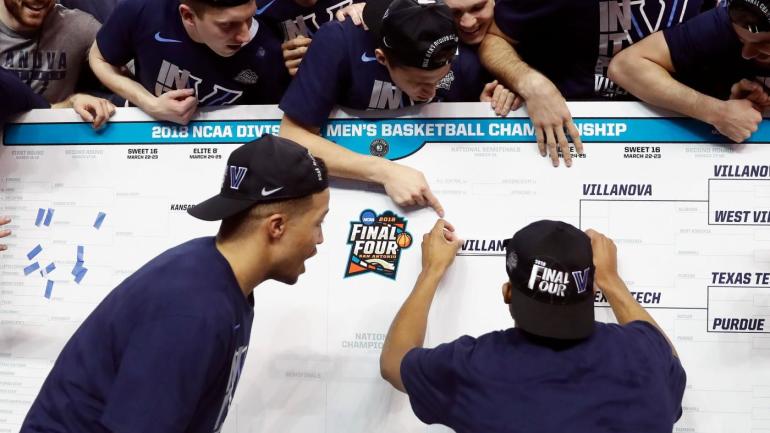
The biggest question hanging over the NCAA Tournament for months has been what the NCAA will do to adjust its bracket if a team or teams wind up getting eliminated due to COVID-19.
The NCAA on Thursday provided many answers to this. The organization released a two-page document that outlined its plans for how to adjust, should a team included into the field be unable to compete after the bracket is unveiled.
The NCAA's statement reads that once the bracket (in both the men's and women's NCAA Tournaments) is "finalized and released, teams will not be reseeded, nor will the bracket change."
This means that the Selection Sunday bracket is going to remain static with teams in their spots no matter what might happen afterward. It does not mean the teams inside the bracket can't change because of COVID-19 ineligibility. They can. The NCAA is making room for four at-large replacement teams, if necessary, to move into the tournament field should that be required before the completion of the first round.
Those teams would be ranked 1-4 and will be announced during the Selection Show on CBS on March 14 in the 6 p.m. ET hour. For practical purposes, they would also double as the four highest-seeded teams in the NIT. Teams will have the option to be considered replacement teams, according to the NCAA, and "will remain on their campuses and continue the COVID-19 testing protocol until such time as needed to travel to Indianapolis as a replacement team."
So, theoretically, if a No. 7 seed that is not a conference's automatic qualifier cannot play due to COVID-19, the 69th team in the NCAA's overall order would have the first right of refusal to play and would slide into that 7/10 matchup. If you're wondering if this creates an uneven competitive advantage, the NCAA says it would not.
"Since all four replacement teams would have been seeded as a First Four team had they initially been selected as an at-large team, it is assured that their first-round opponent will not be put at a competitive disadvantage because the replacement team would be either a comparable or lower-seeded team," the organization said.
Even more dramatically, however, is the potential for a replacement team to slide into the spot of a No. 1, No. 2 or No. 3 seed, should disaster strike.
As for the one-bid conferences and their automatic qualifiers, those leagues will determine their replacement teams and send them as needed to take the spot of their league representative in the same line on the bracket. This in effect also precludes a situation in which an at-large team would hop onto the No. 14 line to replace a mid-major opponent.
There is a catch to all of this: the NCAA is instituting a 48-hour deadline from the reveal of the bracket until replacement teams can be added to the field. The deadline is Tuesday at 6 p.m. ET. Any team that would have to be removed after early Tuesday evening would be out of the bracket and the other team in that matchup would move on in a no-contest.
This process would continue throughout the first few rounds of the tournament. The NCAA will not force a team to win a game against another school if its scheduled opponent is unable to play. The NCAA did not explicitly state whether or not this same protocol would apply to the Final Four and national championship game.
Read the full list of contingencies here:
2021 NCAA Tournament bracket contingencies by Matt Norlander on Scribd
![[object Object] Logo](https://sportshub.cbsistatic.com/i/2020/04/22/e9ceb731-8b3f-4c60-98fe-090ab66a2997/screen-shot-2020-04-22-at-11-04-56-am.png)


















